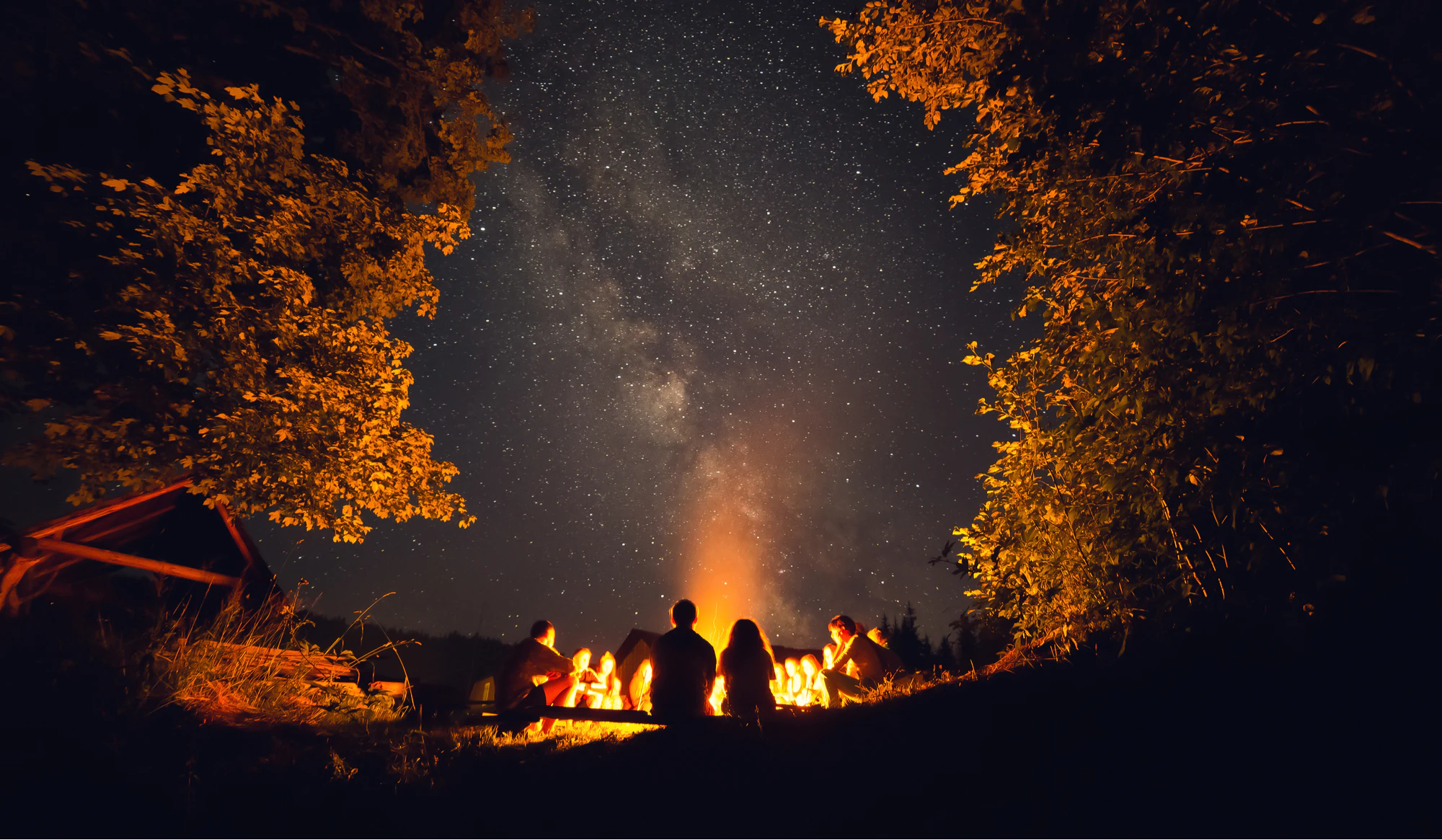How to Treat Smoke Inhalation From a Bonfire
Common Injuries
•
Jun 22, 2022
Reviewed by:

Summer is the season for reunions, barbecues, beach days, and bonfires, which means it is also the season for smoke inhalation from a bonfire. If you find yourself feeling short of breath or coughing after heading home from a bonfire hangout, don’t panic.
Smoke inhalation is among the most common summer injuries every year and is typically seen as no big deal. But injuries sustained from smoke inhalation can vary from incredibly mild to severe. If whoever inhaled the smoke is having difficulty breathing or communicating, and their symptoms are rapidly worsening, seek medical attention immediately.
What are the symptoms of smoke inhalation from a bonfire?
Symptoms of smoke inhalation are the same no matter the source. Signs of smoke inhalation can include, but are not limited to:
- Shortness of breath
- Coughing
- Headaches
- Scratchy throat or hoarseness
- Changes in skin color
- Itchy, irritated eyes
- Swollen sinuses and nasal passages
- Confusion
- Fainting
- Seizures
A sore throat and pair of itchy eyes will likely dissipate with a good night’s sleep, but if symptoms persist you should see a doctor — even for non-acute symptoms, or symptoms that seem minor. We all know that campfire smoke causes sore throats, but smoke inhalation can cause long-term heart and lung problems, especially if frequent and untreated.
What happens if you inhale too much bonfire smoke?
Bonfire smoke, unlike smoke inhalation from a campfire, often contains even more carcinogens from foreign materials other than wood. You should aim to not breathe the smoke at all by keeping a healthy distance from the fire and making an effort to not directly inhale the smoke. Bonfires, no matter what they are composed of, produce an immense amount of carbon monoxide — by sitting near one in a poorly ventilated area you expose yourself to the risk of accidental poisoning from carbon monoxide.
Breathing in smoke from a bonfire isn’t only dangerous because of carcinogens in the smoke, but also the extreme heat. Bonfires get incredibly hot, and inhaling air that is hotter than the lining of your respiratory tract is used to for extended periods of time can cause a lot of damage — even more damage than smoke. If the fire feels too hot, back away.
Inhaling a bit of smoke is often nothing to worry about, but if you have an existing respiratory problem, like asthma or COPD, it can create a dangerous situation. If someone is having trouble breathing in, no matter their medical history, you should seek medical attention.
How do you treat fire inhalation?
Minor symptoms of smoke inhalation can be treated at home with a shower, some cough drops, and a good night’s rest. More severe smoke-inhalation symptoms might need to be treated in an emergency room.
Treating smoke inhalation in a hospital will likely include some of the following:
- Oxygen (Non-Rebreather)
- Bronchoscopy
- Chest X-rays
- Blood tests
- Hyperbaric chamber (carbon monoxide poisoning)
- Medications
If you are experiencing any severe symptoms of smoke inhalation you should seek medical attention immediately.
Bonfire and campfire safety can save your lungs and your life
There are a few ways in which you can make sure that you don’t end up in the emergency room for smoke inhalation.
- Only have a fire on a day with low wind and no air pollution advisories.
- Don’t use gasoline or other accelerants.
- Use only untreated wood and no manufactured logs.
- Keep the fire small.
- Keep children away from the fire and instruct them on safety practices.
- Make sure you can put the fire out, whether that is with a hose or fire extinguisher.
Worried about smoke inhalation from a bonfire? A Complete Care freestanding emergency room is ready to take care of you
Treating smoke inhalation from a bonfire is often pretty simple. But, if you’re experiencing intense or persistent symptoms of smoke inhalation you should drop by one of our stand-alone emergency rooms to be safe.
The staff at Complete Care is trained to get you the treatment that you need, quickly. We have locations all over Texas — including two in Austin — or in Colorado Springs, all ready to take Complete Care of you, any time of day.
More Helpful Articles by Complete Care:
